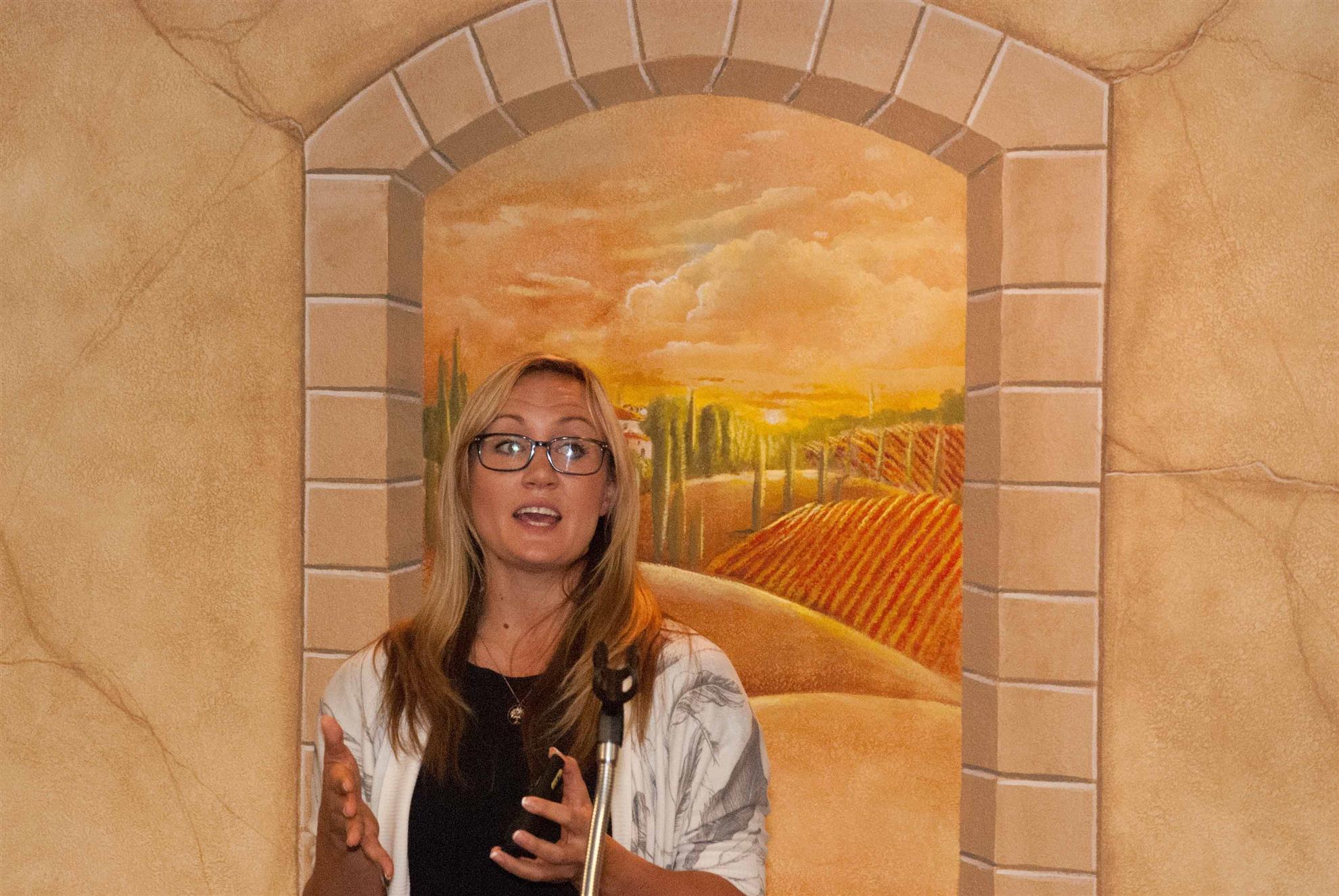Teresa Baldassari - Child Abuse and Neglect - Sonoma County
Teresa Baldassari–Child Protective Services/Family Youth and Children's Services

Teresa Baldassari–Child Protective Services/Family Youth and Children's Services
Teresa is relatively new to Sonoma County. She has an extensive background in social work, obtaining a Masters degree at Loyola University in Chicago and working in healthcare for a while. She has spent the last 3 or 4 years in Peru providing social services to the people of that country. She has been with CPS for the past year.
She presented it a broad program covering the scope of Child Protective Services including its history in the United States and California, who must report child abuse and statistics on abuse nationwide as well as in Sonoma County. She also discussed types of child abuse and neglect and some interventions that we as members of the community might take in the event that we are in the situation where we see the potential for abuse occurring.
Child abuse reporting is relatively new, starting in the late 1800s in New York City. Domestic animals had more protections from abuse and neglect than children had at that time. The laws were changed at that time and gradually the scope of what is considered abuse has been defined, and the list of people who are required to report suspected cases of abuse or neglect has expanded. It was not until 1963 that physicians were mandated to report physical abuse of children. In 1966 all states had child abuse reporting laws. California adopted the National Child Abuse and Neglect Reporting act in 1980.
There are now 42 categories of mandated reporters, including computer technologists (monitoring for child pornography). Basically any person involved with oversight of activities in the community is mandated to report suspected abuse.
Nationwide, in 2012, there were 3.4 million reports involving 6.4 million children. 1640 children died from abuse and neglect in that year. Sonoma County had 5,338 reports made in 2013. 1,880 were serious enough to require a face-to-face investigation. 195 children were removed from unsafe in abusive homes and there were currently 896 active child welfare cases. Of those cases, 60% represent neglect, 17% emotional abuse, 16% physical abuse and 3% sexual abuse.
Ms Baldasarri defined physical abuse, neglect, sexual abuse and emotional abuse. Her handouts gave detailed descriptions of these conditions.
There are protective factors that increase the health and wellbeing of children and families. These include promoting healthy parent-child relationships, enhancing parental resilience, developing social connections, developing parenting and child development understanding, offering support in times of stress and fostering social and emotional competence.
She gave concrete examples of what to do if you see a struggling parent including:
1. Start a conversation with the adult to direct attention away from the child.
2 Divert the child's attention (if misbehaving) by talking to the child.
3 Look for an opportunity to praise the parent or the child.
4. If the child appears to be in danger call 911 for immediate danger or if you suspect or witnessed abuse report to family youth and children's services at 565-4304.